Organizational Development
Program management
Organization design and structure including job analysis, descriptions, and Key Performance Indicators
Workshops to help you build capacity and capability
Training

Organizational Development
Organizational Design, Development and Training
Global growth requires building new organizational capabilities. BSI is your partner for organizational design and development.
Training and Certification
Our certification courses include:
Experiential Learning
The best way to learn is through experience, and the best training is “experiential,” meaning that it is interactive and simulates a real-world situation. When it comes to learning about Forecasting and Demand Planning, Sales and Operations Planning, Inventory Management, and Production Scheduling, there is no substitute for learning “on the job.” The best tool around for quick team learning on these topics is an interactive and fun exercise that was developed at MIT in the 1960s. In a two-hour session, participants learn first-hand about “bullwhip effect” and how to deal with it to make supply chains more efficient. Even those with 20 or more years of experience are surprised at how much they learn during the brief exercise and say that the exercise has fundamentally crystallized and heightened their understanding of their jobs. BSI offers customized sessions of “the beer game” for corporate groups from four to 45 people at a time. There is no advance preparation required. It can be done onsite and, if desired, coordinated with other activities such as retreats and workshops.
Organization Development: Examples
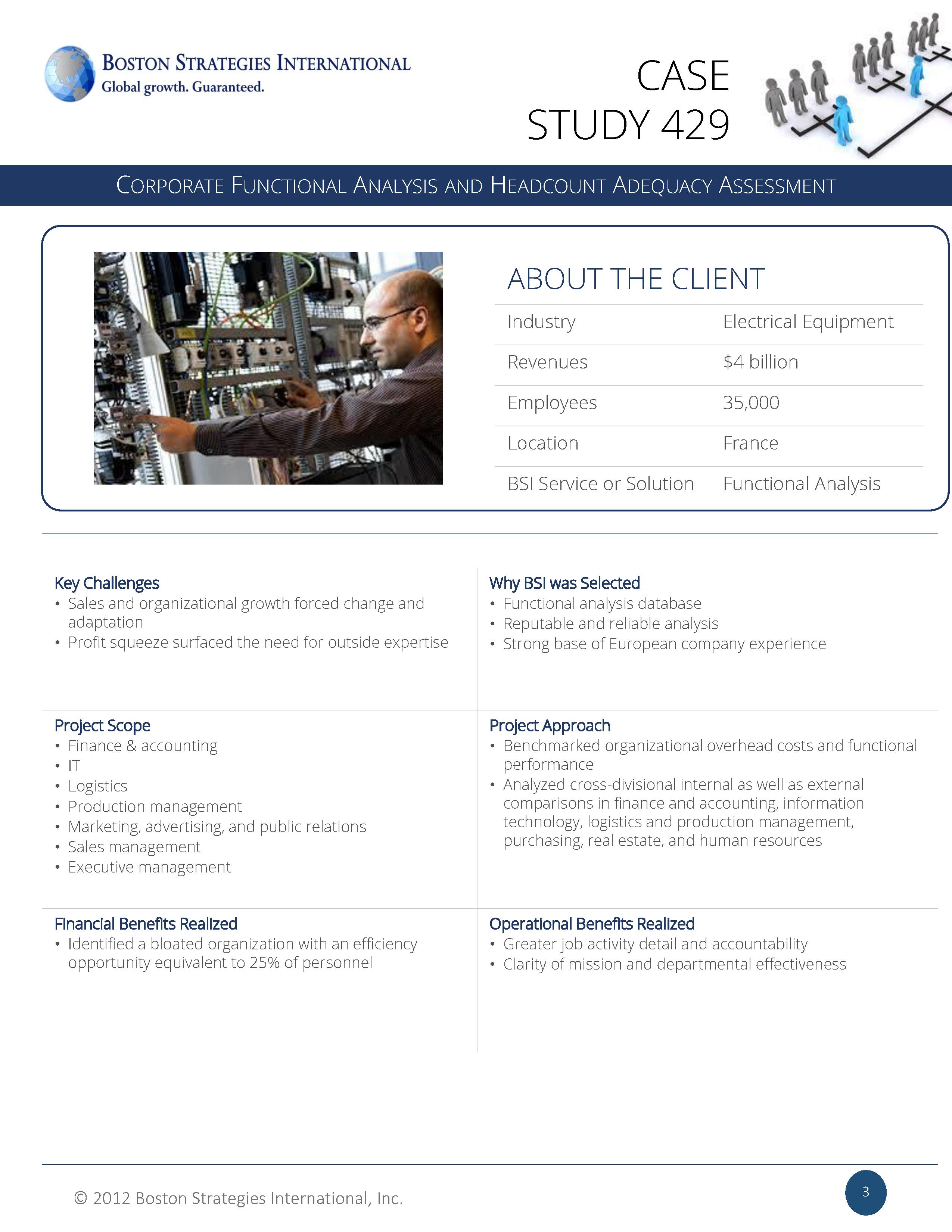
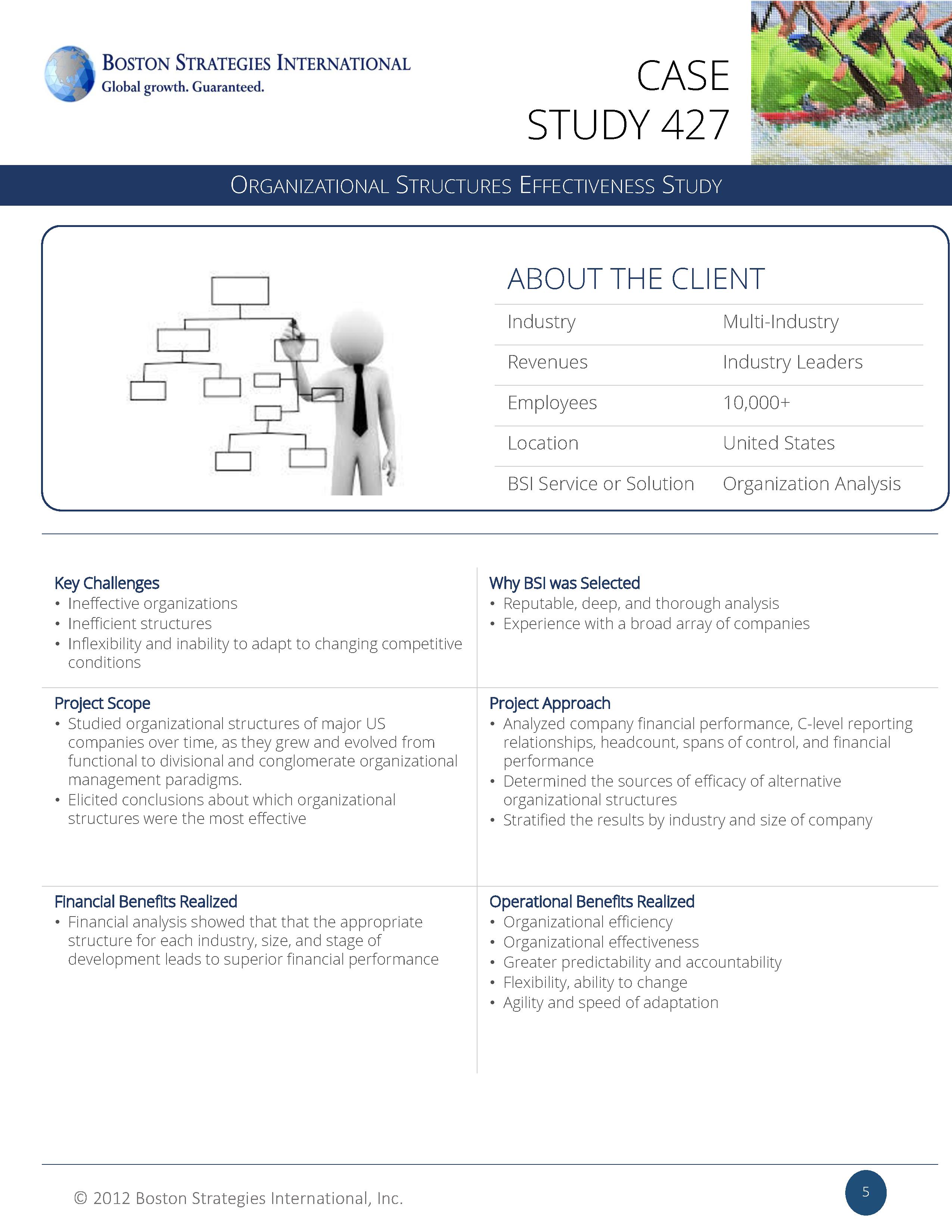
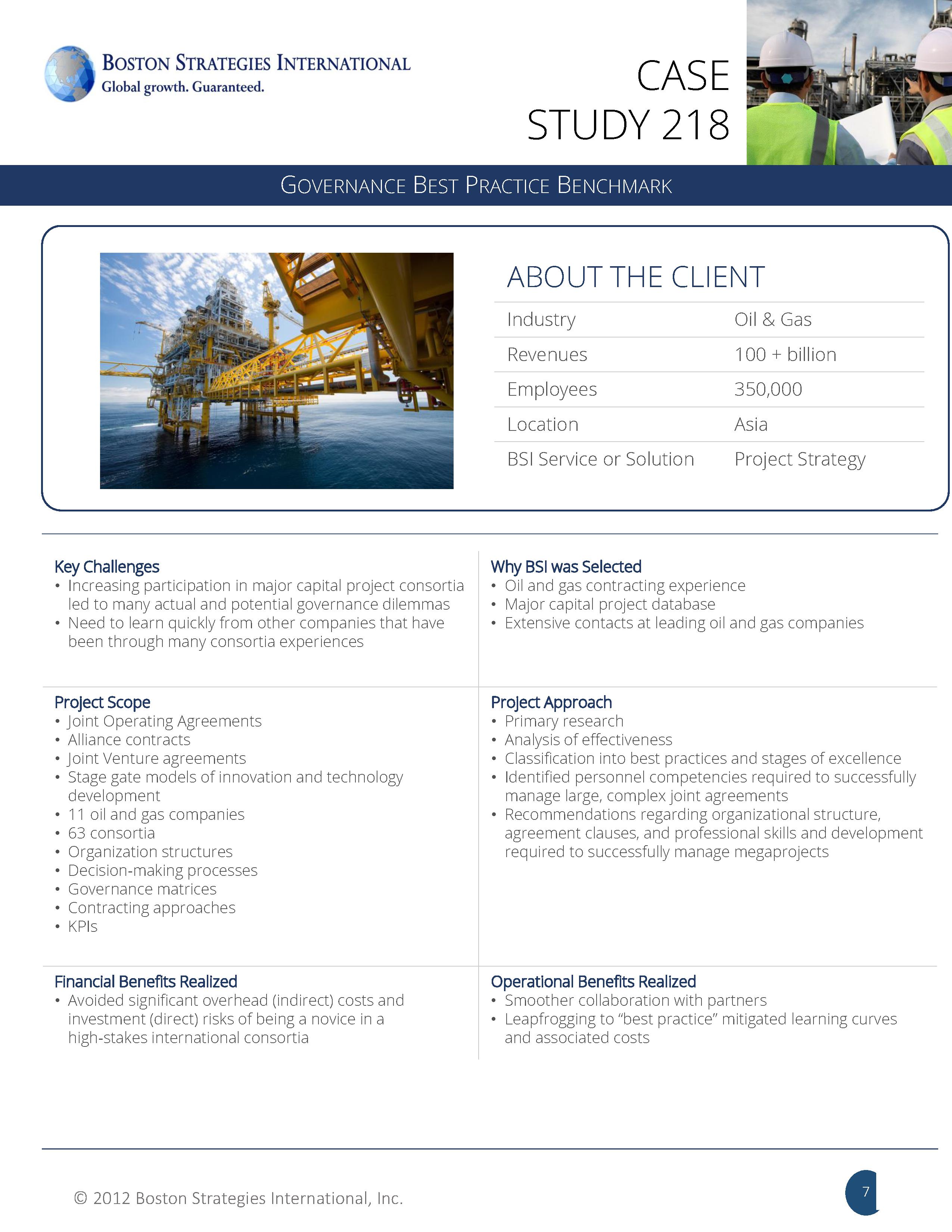
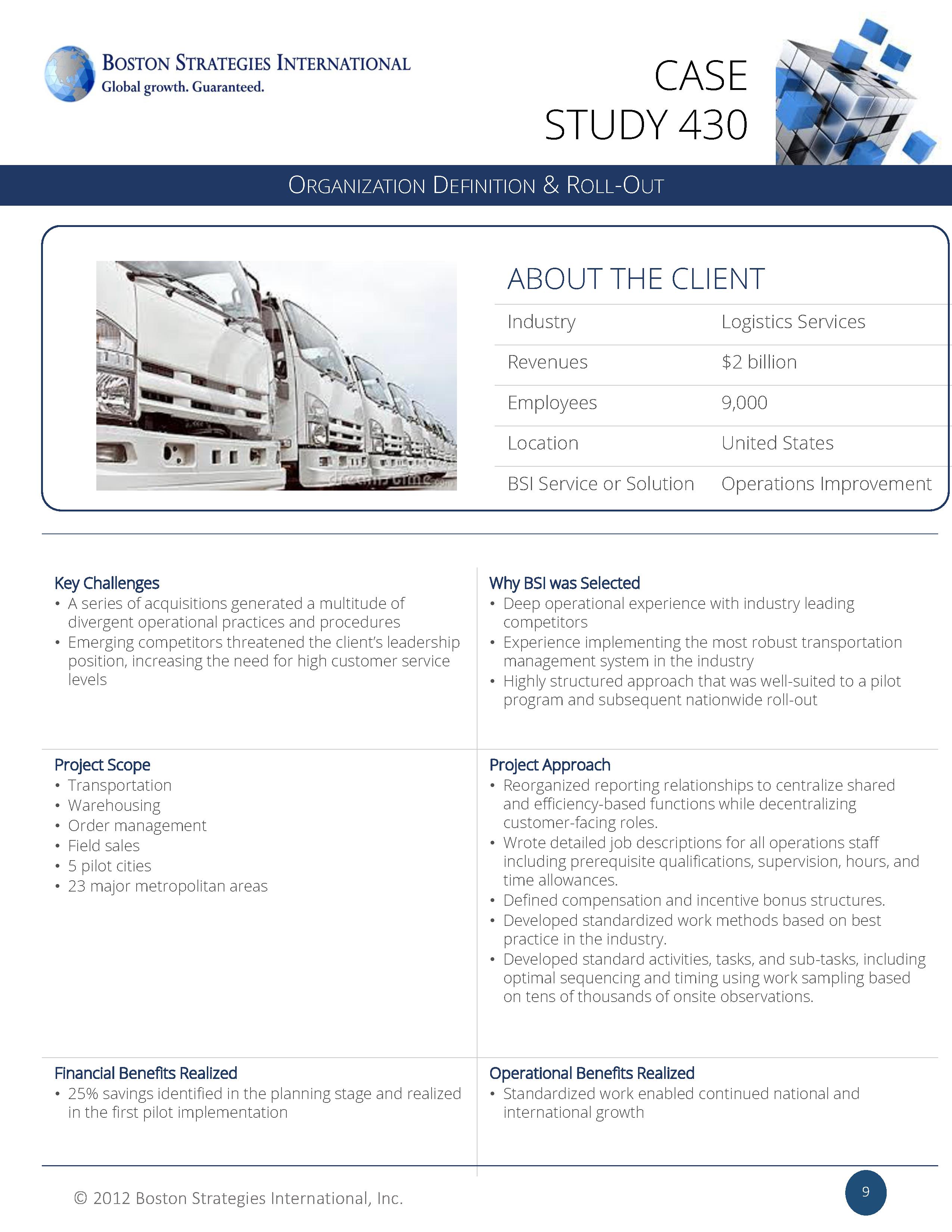
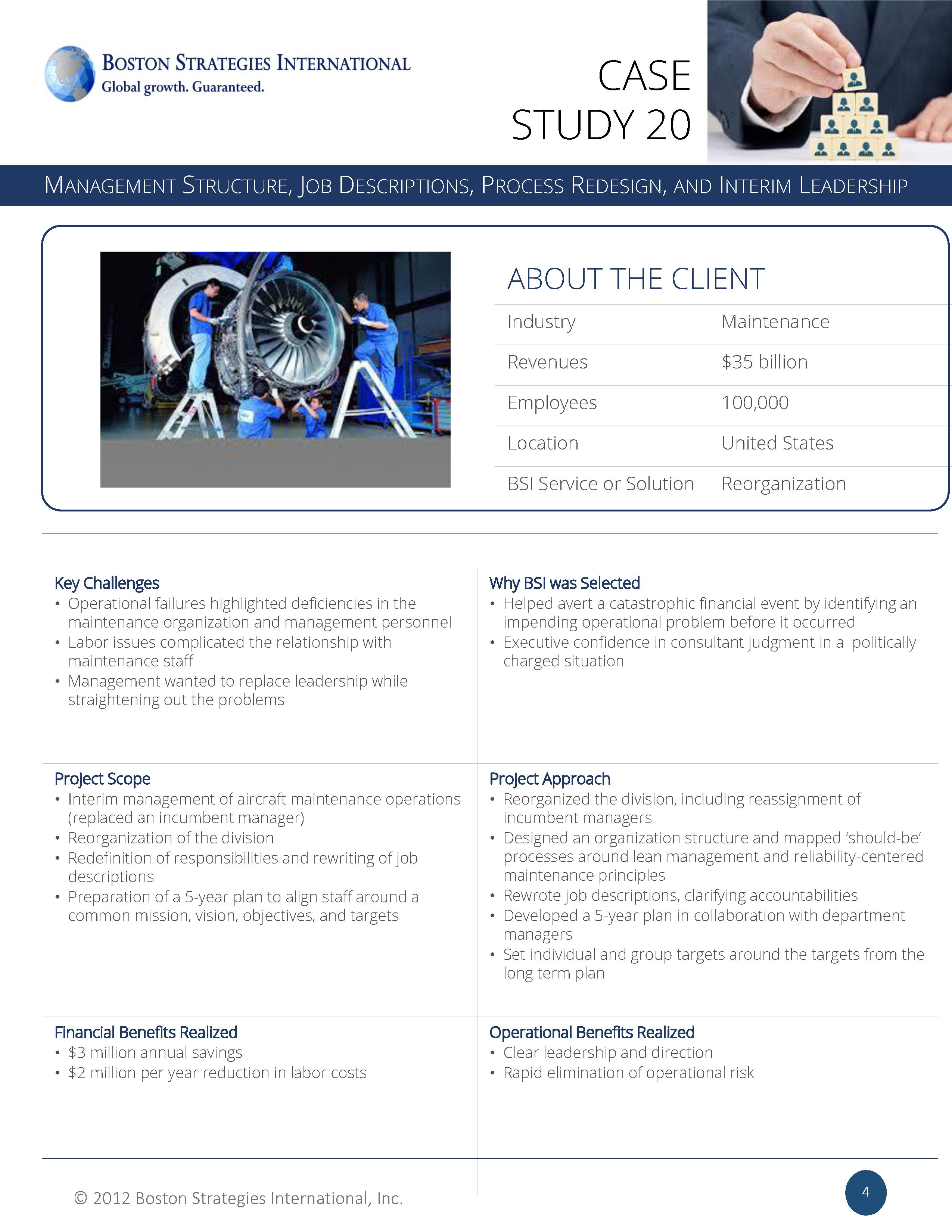
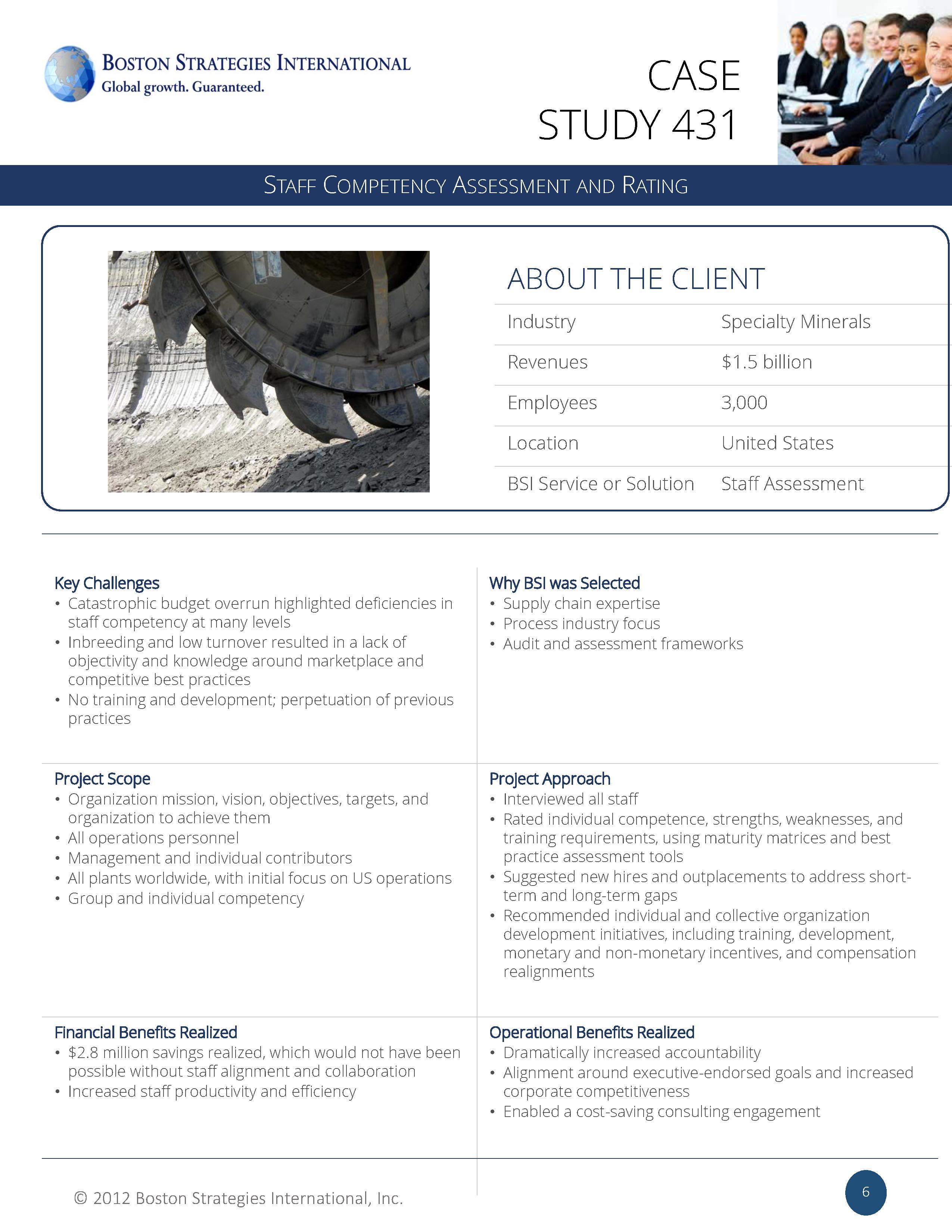

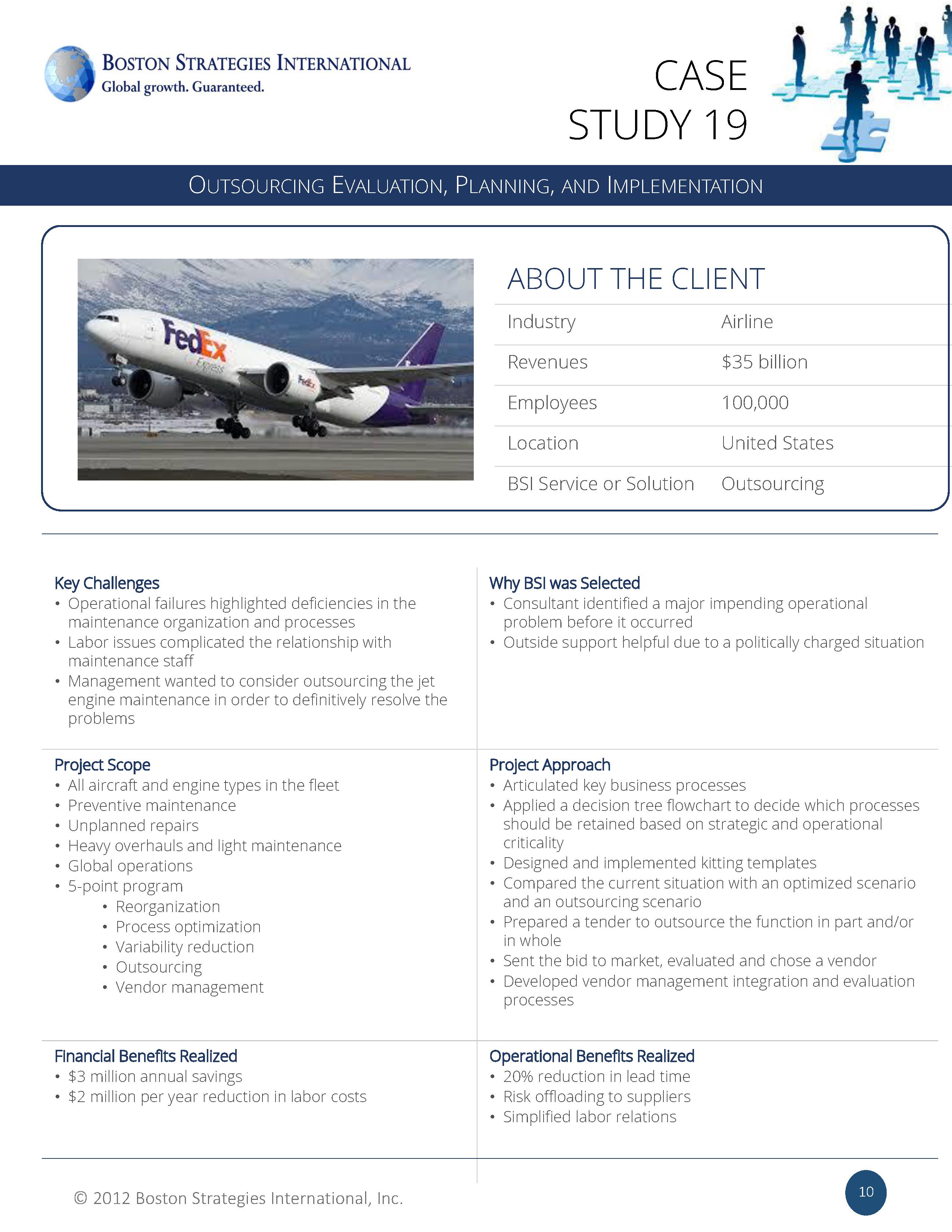
How to Establish Governance & Organization that Ensure Organizational Accountability for Management of Risk across the Supply Chain
1. How to successfully engage and manage a cross-functional risk management program
- Establishment of a program management structure
- Analysis of customer requirements
- Clarifying strategy, goals, metrics and targets
- Baselining and benchmarking
- Implementation (launch, execution and monitoring)
2. How to (re)organize roles and responsibilities around a newly-appointed supply chain risk officer
- Taking a skills and capability inventory
- Assessing gaps
- Adapting reporting relationships
- Refining roles, responsibilities, and job descriptions
How to Adopt a Top-Level Management Framework and Articulate First Principles of Risk Management
1. How to evaluate, select, and adopt the most suitable international standard(s) on risk management
- ISO risk management standards
- European-based standards (OHSAS, OHAS, NORSOK, BSI, etc.)
- Others (NFPA, etc.)
2. How to articulate and negotiate first principles for managing supply chain risk, which guide decisions by all stakeholders, regarding:
- Single sourcing risk
- New technology risk
- Work structure risk
- Time horizon risk
- Materials availability risk
How to Adopt Formal Metrics, Measurements, and Tools that Reinforce the Chosen Risk Management Framework, Values, and Principles
1. How to quantify the cost of supplier failure on total supply chain cost
- Total Supply Chain Cost methodologies
- Cost of Failure methodologies
2. How to shift from First Cost to Total Cost
- Total Cost methodologies
- Bridging from a First Cost approach
- How to adapt Lean and waste reduction initiatives to the Total Cost framework
3. How to integrate the use of predictive analytic tools
- Probability
- Simulation modeling tools
- Capital budgeting under uncertainty
How to Manage Supply Risk through Best Practices and Procedures by Extending Best Operational Risk Practices and Procedures to Supply Chain Partners, Especially Those That Prevent Hurrying; and Ensure Compliance
- How to establish joint stakeholder objectives for safe supply chains, based on a deep and real program aimed at hitting specific and realistic targets
- How to structure a supplier training program that embeds the methods and techniques whereby they can achieve the targets
- How to conduct audits that that ensure safe supply chain practices during work execution
experiential learning
Strategic Supply Chain Development
- What Exactly is Supply Chain Management?
• Essential Definitions • Recent Development of Supply Chain Management • Why Software Can’t Solve the Problem • The Key Principles of Supply Chain Management • An Executive’s Supply Chain Strategy Framework - The Oil and Gas Supply Chain
• The Early Days • 1960s: Optimization • 1970s: Technology • 1980s-1990s: Globalization • 2000s: Power Shift • Leaders and Laggards - Why Supply Chain Management is Critical For The Oil And Gas Industry Today
• A Competitive Necessity • Getting More Important • The Bullwhip Problem - The Goal
• From No Metrics to Too Many Metrics • Economic Value Added(EVA) • Level 1 (CFO-Oriented) Results Metrics • Level 2 (Functional VP-Oriented) Results Metrics • Channel Spanning Performance Measures - What Makes Supply Chain Management Strategic
• Defining the Four Generic Supply Chain Strategies • Configuration • Coordination • Improvement • Supply Chain Strategies for Global and Regional Economic Growth • Supply Chain Network Design
World-Class Production and Inventory Control Practices
- Capacity Planning
• Site Location • Flexible Capacity Models - Throughput Analysis
• Theory of Constraints • Assessing Facility Capacity • Measuring Capacity Utilization • Bottleneck Elimination Procedures • Involving the Work Force - Just-In-Time
• Replenishment Mechanisms • Kanban • Integrating S&OP with JIT • Managing Long Supply Chains in a JIT Environment • Batch Pull • Kitting • Raw Materials, WIP, and Finished Goods Order Quantities - Optimal Inventory Levels And Placement
• Managing the Interfaces Between Departments such as Maintenance, Assets, Commercial, Inventory, Purchasing, Stores, Logistics, and Inspection • Who Owns the Inventory - Sales and Operations Planning
• Managing the Interfaces Between Departments such as Maintenance, Assets, Commercial - Collaborative Inventory Management
• Multi-Echelon Inventory Planning Processes • A Process for Building Trust • Changing the Forecast and the Plan • Information Systems and Support Tools - Demand Planning
• Heuristic Methods • Moving Averages • Exponential Smoothing • Trend Analysis • Econometric Models • Delphi Method • Multi-Characteristic Approaches - Warehousing, Storeroom and Transportation Optimization
• Storeroom Management • Working With carriers and logistics providers • Mode Selection • On-Dock Operations • Customs Clearance • Landed Cost - Information Systems
• Company Wide Interoperability between ERP and Supply Chain Systems • CAD/CAM • Network Design • SRM • Demand Planning • WMS • CRM • Cost and Pricing • E-Commerce • Best Practices in RFID and Barcodes •IT/EDI/Paperless
How to Apply the 4 Leverage Strategies
- HOW TO BENCHMARK YOUR SOURCING PERFORMANCE
• History of benchmarking • The benchmarking debate today • Key sourcing metrics • How to gather internal data • How to gather external data • Drawing conclusions • Setting goals • Implementing change • The future of benchmarking sourcing performance - HOW TO LEVERAGE YOUR COMPANY’S SCALE
• Why scale is important • Overview of scale-based techniques • How much to rationalize the supply base • How to Form a Strong Central Purchasing organization • How group purchasing organizations work • Small vs. large company strategies • Case studies - HOW TO ANALYZE YOUR SUPPLIERS’ COSTS
• Total cost concepts and elements • Why you need to understand your suppliers’ costs • How to obtain supplier cost and margin data • Financial statement analysis • How to Use Cost and Margin information wisely • Managing open supply chain relationships - HOW TO QUALIFY POTENTIAL STRATEGIC SUPPLIERS
• The difference between qualifying strategic and transactional suppliers • Supplier qualification approaches and methods • Elements of the BSI Qualified Strategic Supplier (QSS) process • When to qualify suppliers • The case of overseas suppliers • How to store and access supplier qualification data • How to become a good Qualified Strategic Supplier
Other Workshops
- BASICS OF SUPPLY CHAIN MANAGEMENT
• What Software Can and Cannot Do • The Key Principles of Supply Chain Management • The Difference Between Supply Chain Management and Supply Chain Strategy • Defining the Four Generic Supply Chain Strategies • The Integrated Supply Chain Strategy • Supply Chain Strategies for Global and Regional Economic Growth - HOW TO REDUCE OPERATING COST
• The Performance Advantage of a Rationalization Supply Chain Strategy • Strategic Sourcing • Make-or-Buy/Outsourcing • Waste Reduction • Standardization and Simplification of Specifications • Transportation Optimization • Tier-Skipping • Supplier Kaizen • Consignment/VMI • Design for Manufacturability - HOW TO INCREASE OPERATIONS RELIABILITY
• Key Success Factors of a Synchronization Supply Chain Strategy • Overview of the Toyota Production System • Constraints Management and Throughput Analysis • “Pull”-Based Demand Trigger • Just-in-Time (JIT) • Perfect Order Fulfillment • Make to Order (Make, Assemble, and Engineer to Order) Sales & Operations Planning (S&OP) • Collaborative Inventory Management • Everyday Low Price • Shifting Demand and Capacity • Better Forecasting Methods • Risk Mitigation - HOW TO GET CLOSER TO YOUR CUSTOMERS
• Gaining Control of the Customer Relationship • Value Analysis • Customer Knowledge Management • Linking the Customer Data To All Transactions • Customer Profitability Management • Mass Customization • Available to Promise • Personal Interactions • Design For Configurability • Lifetime Services - HOW TO INNOVATE RAPIDLY, FLEXIBLY, AND CONTINUOUSLY
• Key Success Factors of an Innovation-Driven Supply Chain Strategy • Continuous Market Feedback Loop At Customer Touch-Points • Concurrent Product Development • Rapid and Early Prototyping • Product Lifecycle Management • Early Supplier Involvement • Early Customer Involvement • Forward Branding • “Design For Supply Chain” Process
Supplier Partnering
- Outsourcing
• Which Activities to Outsource and Which to Keep In-house • Examples such as Freight Forwarding, Expediting, and More • Unbundling Transport from The Product Price – Why and How • Terms of Freight - Combined Purchase And Operating/Maintenance Agreements
• Economies of Scope • Economies of Scale • Computing an ROI • Go-No-Go decisions • Operating Leases • Maintenance Contracts • Term of Agreement • Clauses and Conditions • “Out” Clauses and Exit Strategies - Architecting Supplier Partnerships
• Ownership of the Inventory • Provisioning of Spares • Rules of Engagement with “Sister” Companies • Transfer Prices • Bidding Rules and Exceptions - Strategic Sourcing
• A Proven Process Map • Spend Analysis • Supply Market Analysis • Category Strategies • Standardization and Simplification of Specifications •Managing Sourcing Events • VMI • Examples: Freight Forwarding, Expediting, and More - Negotiation And Partnerships
• Forming Partnerships • Buyer vs. Supplier Leverage: Power Plays • Open Book Negotiations • Dealing with Core vs. Non-Core Suppliers • Target Pricing • Indexing Prices • Setting Price Premiums for Customized and Expedited Services
Accounting and Performance Management
- Finance and Accounting
• Key Process Metrics • Additional Detailed Process Metrics • How Much Influence Should End-Users Have on the Vendor Performance Scorecard • How much Weight Price Should Have in the Overall Evaluation • Best-in-Class Processes for Technical vs. Commercial Evaluation of Bids • Structuring the Bid Process to Identify and Foster Creativity, Innovation, New Ideas and New Technologies - Risk Management
• Supply Chain Risk Factors • 7 Steps to Mitigate Risk • Examples of Good and Bad Risks • Supply Chain Security • Governmental Regulations and Compliance - Continuous Innovation
• Key Success Factors of an Innovation-Driven Supply Chain Strategy • ROI Assessment of Innovation • Performance Advantages of an Innovation Supply Chain Strategy • Oil and Gas Supply Chain Best Practice and Benchmark • Supplier Specific Benchmarks • Technical and Commercial Evaluation • Channel Performance Measures • Vendor performance scorecard • Continuous Market Feedback Loop At Customer Touch-Points • Early Supplier Involvement • Early Customer Involvement - Supply Market Intelligence
• Making the Business Case for a Market Intelligence Program • Negotiating with Suppliers Based on External Information • Monitoring Demand and Supply Conditions • Negotiating with Suppliers Based on External Information • Monitoring Core Suppliers’ Performance - Organizing, Training, And Developing SCM Staff
• Cross-functional project management • Change management • Training • Inter-organizational psychology - Benchmarking Toward Best Practice & Performance
Where to Get Competitive Benchmarks • Where to Get Supplier-Specific Benchmarks • Setting and Adjusting Targets
How to use the BSI SQRL Vendor Rating System
- HOW TO CREATE A HIGH-PERFORMING PORTFOLIO OF SUPPLIERS
• Defining risk • Measuring risk • Managing risk • The supplier portfolio matrix • Developing suppliers: Increasing synergy - HOW TO MAKE THE MOST OF SINGLE AND SOLE SOURCE SITUATIONS
• Sole source • Single source • Dual source • Economic principles • Strategies • Case Studies - HOW TO HEDGE AGAINST PRICE, CURRENCY AND COUNTRY RISK
• Defining risk • Measuring risk • Managing risk • Hedging against price risk • Hedging against currency risk • Hedging against country risk • Hedging against unavailability • Getting started
Other Workshops
- INVENTORY AND MATERIALS MANAGEMENT
• An Interactive Facilitated Game (“The Beer Game”) Teaching the Principle of the Bullwhip Effect • What to Do About Bullwhip Effect in Your Organization to Improve Fill Rates and Reduce Inventory • Optimal Inventory Placement - INFORMATION TECHNOLOGY SOLUTIONS
• The ERP Backbone • Network Design Applications • Supplier Relationship Management Applications • Demand Planning Applications • Advanced Production Scheduling Applications • Production Control Applications • Transportation Management Systems (TMS) • Global Positioning Systems (GPS) • Distribution Requirements Planning (DRP) Systems • Radio Frequency Identification (RFID) • Warehouse Management Systems (WMS) Systems • Customer Relationship Management (CRM) Applications • Cost and Pricing Tools • E-Commerce • Product Lifecycle Management (PLM) Applications - ORGANIZING, TRAINING, AND DEVELOPING SCM STAFF
• Choosing a Functional vs. a Process-Based Organizational Structure • Developing A World-Class Skill Base • Key Success Factors for Supply Chain Professionals • How to Structure a Staff Development Program • Engaging Suppliers In Supply Chain Management Goals - MEASURING SUCCESS
• How Many Metrics to Use • Using Economic Value Added (EVA) • Level 1 (CFO-Oriented) Results Metrics • Level 2 (Functional VP-Oriented) Results Metrics • The Next Level Down: Key Process Metrics • Additional Detailed Process Metrics - OIL AND GAS SUPPLY CHAIN MANAGEMENT SEMINAR
• What is Supply Chain Management • The Oil & Gas Supply Chain • Why Supply Chain Management is critical for Oil & Gas industry today • Which markets to buy from • How to determine the right price to pay • Which benchmarks and targets will provide the competitive edge
Additional workshops & seminars include:
- Intermodal Freight Planning
- Operational Alignment
- Organizational Alignment
- Project Appraisal and Economic Analysis
- Negotiation
- Safety & Environmental Analysis
- Strategic Research and Planning
- Transportation Planning & Policy
Also, consider our Oil and Gas Supply Chain Management workshop.
To set up a workshop, please email the number of attendees and the date and location of the workshop to David Jacoby at djacoby@bostonstrategies.com.
Our Articles

Leading Supply Chain Transformations with Credibility. Blending Vision, Realism and Competence.
Academic theory has shown that the best way for individual companies to maximize their own benefit in simulations of the prisoners’ dilemma is by playing “tit-for-tat,” mimicking other players’ moves but never offering more than what the other party offers you. So wouldn’t supply chain leaders have to be naive to trust their supply chain partners and collaborate by volunteering data and forecasts of orders, shipments, and inventories? No, but the trust must be based on proven experience and demonstrated supply chain leadership.
Click here for free download.
Your content goes here. Edit or remove this text inline or in the module Content settings. You can also style every aspect of this content in the module Design settings and even apply custom CSS to this text in the module Advanced settings.

Mega-Sourcing: Do You Have the Skills?
With senior executives planning to place 30% greater emphasis on strategic sourcing over the next four years, the dearth of strategic supply chain skills has become a critical concern of top management. The dramatic increase in the intensity of strategic sourcing efforts, combined with a frequently outdated purchasing skill-set in organizations, presents a formidable challenge to companies as they endeavor to develop high-performing supply chains.
Please click here for the article.
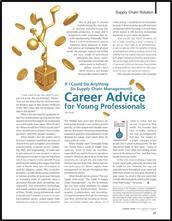
If I Could Do Anything in Supply Chain Management: Career Advice for Young Professionals
Graduates of supply chain management programs have many choices to make today. Which decisions will be the best for their careers? Six considerations can help set the stage for an exciting and successful supply chain career: What should I do? Where should I live? When should I start? What should I aim to achieve? How should I get there? And Who should I emulate?
Click here for free download.

Developing Your Supply Chain Organization
By 2015, 80% of your company’s market capitalization will be derived from intangible assets. This means that human capital will be critical to your company’s success. What is your program for developing and sustaining a competitive advantage through supply chain management skills? Certification, rotation, internationalization, and technological sophistication are just some of the answers.
Please click here for the slide presentation excerpt.

The Changing Face of the Logistics Manager
Today there are new challenges facing supply chain managers. The scope of supply chain management is growing and technology continues to be central to change. How is your supply chain affected by these new challenges, and how are supply chain managers coping?
Presented to PARCEL Forum, 2007
Please click here for the slide presentation excerpt.

Empowering and Motivating Workers
Managing people is not only a matter of interpersonal skills. Workers at all levels need to be enabled with technologies, processes, budgets, and empowered to use the information at the “moments of truth” to delight customers. David Jacoby, President of Boston Strategies International, wrote this white paper for the Economist Intelligence Unit.
Click here to request this paper from the publisher.

Global Shipping: The Key is People
Asia and the Middle East are booming, and trade is increasingly focused on shipping to and from Asia. This poses challenges for both shippers and carriers in every corner of the globe. Those with the most adept and adaptable human resources will be the winners in this critical supply chain frontier, and these companies serve as benchmarks for us all.
Please click here for the article.
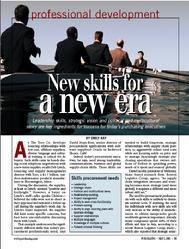
New Skills For a New Era
Purchasing Magazine’s Emily Kay interviews David Jacoby, President of Boston Strategies International.
Please click here for the article.
To request more information on our firm or our products and services, please contact us.